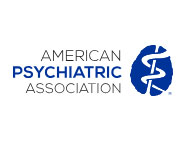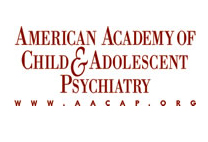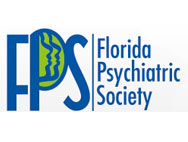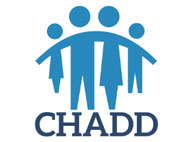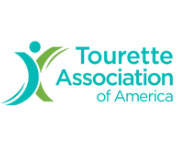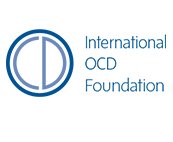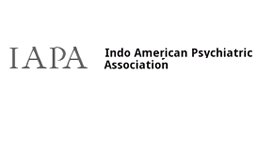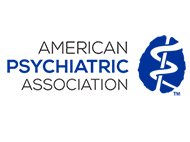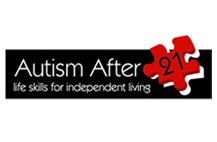OCD/Tics/Tourette’s Disorder
What is OCD?
Obsessive-Compulsive Disorder is an anxiety disorder in which people have intrusive thoughts, feelings, ideas, or obsessions that make them feel driven to do repetitive behaviors to reduce the associated anxiety. Obsessions are recurrent and persistent thoughts or impulses that are frequently irrational or unrealistic, and cause marked anxiety or distress. Compulsions are repetitive behaviors, rituals, or mental acts. Symptoms of this disorder can include repeated checking, excessive washing or cleaning, extreme hoarding, aversion to particular numbers, and rituals, such as opening and closing a door a certain amount of times before entering or leaving a room. Each OCD sufferer may have different obsessions and/or compulsions, but all suffer with marked anxiety and distress related to their OCD that interferes with their activities of daily living including school, work, and personal relationships.
Approximately 2.2 million American adults age 18 and older have OCD. The first symptoms of OCD often begin during childhood or adolescence. Many children and adolescents feel embarrassed or ashamed of their symptoms and may be hesitant to talk about their intrusive thoughts or behaviors. An evaluation by a child and adolescent psychiatrist can be crucial to understanding the complex thoughts and behaviors present in OCD and to seek treatment. Studies have shown interventions such as cognitive behavioral therapy and medication treatment if needed are highly recommended to aid treatment. EARLY INTERVENTION IS KEY as the disease can have an insidious process leading to adult dysfunction. In addition to treatment by a psychiatrist, patient and family education, and behavior therapy by a child and adolescent psychologist can be key to effective treatment as well. Dr. Kothari, M.D. can provide an initial evaluation and treatment for children and adolescents in the Boca Raton, Delray Beach, and Coral Springs area that may be displaying symptoms of Obsessive- Compulsive Disorder. She is also aware of many local and national support systems in place to aid families. In the past she has been a guest speaker at the annual International OCD Foundation and is an active professional member.
What are Tics?
A Tic is a sudden, repetitive, nonrhythmic motor movement or vocalization involving discrete muscle groups that can be difficult to control. Tics can occur in any part of the body such as face, shoulders, hands, or legs. Common motor and phonic tics are eye blinking and throat clearing. Up to 10-25 percent of children may be affected during early school years. Many tics are mild and do not affect the person’s quality of life, but some tics can be disruptive to a person’s school, work, or social life. For a much smaller percentage, these tics persist longer than one year and are considered “chronic tics.” Some “chronic tics” can be associated with the most severe form of tic disorder called Tourette’s Disorder. Tics can worsen with lack of sleep and stress. There are various modalities of treatment for tics including CBIT – a comprehensive behavioral intervention for tics, cognitive behavioral therapy and medications.
What is Tourette’s Disorder?
People with Tourette’s disorder have both body and vocal tics with the age of onset usually between 5 and 18. Some of these tics may disappear as the child grows into adulthood, though others may persist. Children with Tourette’s may have difficulty with attention, anxiety, impulsivity, obsessions, compulsions, and learning difficulties. Some people with Tourette’s may blurt out inappropriate vocalizations or make rude gestures, without the ability to control these tics and should not be punished or blamed. A comprehensive evaluation by a child psychiatrist can determine if the child is suffering from Tourette’s disorder or another tic disorder. A child psychiatrist can help with medication management for the symptoms and behavioral therapy and also be resourceful with community resources to aid with a family. If further referrals are needed for therapy a child psychiatrist may know local specialists.
What is Trichotillomania?
People with trichotillomania pull hair from their body, including their face, eyebrows, eyelashes, scalp, arms, legs, and pubic area. They are not able to stop and may not even notice until they have to cover bald patches with hats, scarves, clips, or wigs. Often people with trichotillomania may suffer from pleasure, excitement, or relief when pulling out their hair; shame, embarrassment, depression, and/or anxiety resulting from the hair loss; and problems at school, work, or at home.
The causes of trichotillomania are unknown, but the symptoms often increase in times of stress. Evaluation and treatment by a child and adolescent psychiatrist can improve symptoms. Treatment modalities include cognitive behavior therapy and medications to reduce the stress, anxiety, and obsessive compulsive symptoms. A psychologist can help children and families with treatment specific to their needs and may offer support groups. Trichotillomania can be a challenging condition to treat and early intervention is critical.
What is Skin Picking?
Similar to trichotillomania, skin picking is thought to be part of a group of disorders called Body-Focused Repetitive Behaviors (BFRBs), in which people harm or damage themselves or their appearance. People who suffer from Skin Picking Disorder (SPD) may repetitively touch, rub, scratch, or pick at their skin in order to remove small irregularities or perceived imperfections. In serious cases, skin discoloration, tissue damage, or visible disfigurement can occur. Some sufferers tend to pick when bored, experiencing anxiety, fear, or excitement, and may find pleasure or relief in the skin picking.
Skin picking may occur on its own, or it may be a symptom of another disorder such as dermatological disorders, autoimmune conditions, body dysmorphic disorder, obsessive compulsive disorder, substance abuse, autism, and/or psychosis. A recent study showed that 23 percent of people with OCD also had skin picking disorder. A psychiatrist can help identify if skin picking is an independent problem or a symptom of another disorder in order to establish an effective treatment plan.
What is Hoarding?
Hoarding is the persistent difficulty discarding or parting with possessions, regardless of their actual value. Items frequently hoarded include newspapers, magazines, mail, boxes, bags, and even food, and clothing, and is differentiated from collecting in the volume of items hoarded, as well as the treatment of the items. Hoarders often feel anxiety over discarding an item and therefore keep it, have difficulty categorizing or organizing their possessions, experience indecision about what to keep or where to put items, have a fear of running out of an item or needing it in the future, feel their items are irreplaceable, and may attach memories to items and fear forgetting the memory without keeping the item. Hoarding behavior can have negative effects on a person from a social, financial, emotional, physical, and even legal standpoint. Many hoarders live in dangerous or unhealthy living conditions, which may lead to divorce, separation, loss of child custody, eviction, embarrassment, shame, and depression.
Hoarders usually begin to exhibit symptoms as early as 11 to 15 years old. Unfortunately, many times the hoarding condition is not highly noticeable until people reach their geriatric years. They frequently can be considered to have an indecisive temperament, frequently are socially withdrawn and isolated, may have a family history of hoarding, or may begin hoarding after having difficulty coping with a stressful life event. Hoarding appears to be more common among those with OCD, anxiety disorders, and depression.
Many hoarders do not perceive their behavior as a problem, therefore the burden to get a diagnosis and treatment may be up to family or loved ones. Treatment usually includes medications and cognitive behavior therapy.
What is Cognitive Behavior Therapy?
Cognitive Behavior Therapy (CBT) is a form of psychotherapy that is used to treat a variety of mental disorders, including depression, anxiety disorders, mood disorders, personality disorders, OCDs, and phobias. Working with a psychotherapist, patients using cognitive behavior therapy can identify harmful or negative thinking, challenge them, and restructure them into healthier ways of thinking or behaving. Cognitive behavior therapy can be helpful for both adults and children. Dr. Kothari who practices in Boca Raton and treats patients in Delray Beach, Parkland, Coral Springs and surrounding South Florida areas can refer patients who would benefit from CBT to an appropriate adult, child, or adolescent psychotherapist who specializes in Cognitive Behavior Therapy.
Dr.Kothari is amazing! She has been my doctor for years...
I have been a patient of Dr. Kothari for over three years. She has invested her heart...
Dr. Kothari has been seeing my sons for seven years. She is a wonderful resource...
Dr. Kothari is very caring. Appointments and waiting times are great...
When we started seeing Dr. Kothari, my son was dealing with a great...
Dr. Kothari has saved my life, this I can say without reservation...

 Patient Forms
Patient Forms Videos
Videos Location
Location





